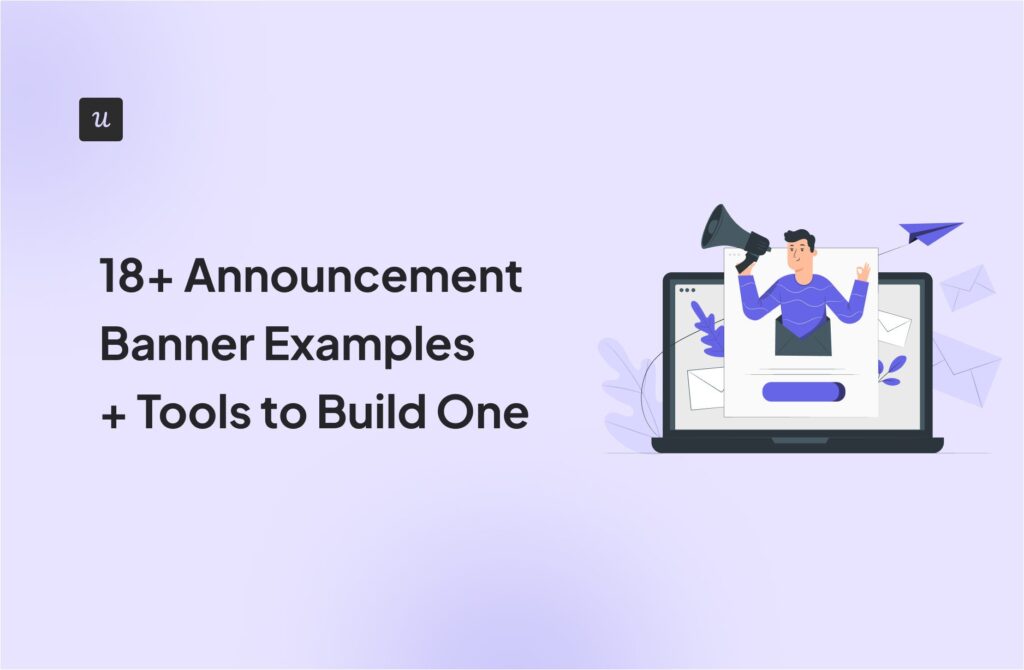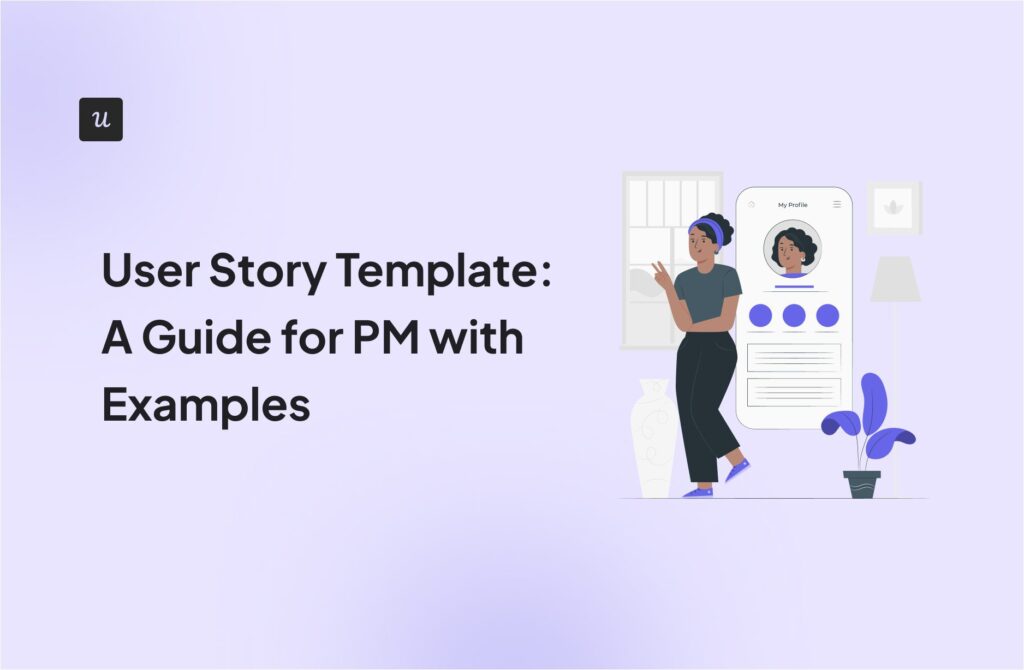
Try Userpilot Now
See Why 1,000+ Teams Choose Userpilot

What are the product adoption frameworks?
- Product management frameworks help guide product teams by establishing standardized, repeatable processes to create successful products. Commonly used product management frameworks include:
- Product-led growth uses your product to drive activation, conversion, and retention.
- A minimum viable product involves creating a basic version of your product to validate the idea and improve on it.
- RICE framework assigns a score to each new initiative based on its reach, impact, confidence, and effort.
- Design Sprint methodology is a six-step process to test new products and feature ideas.
- AARRR helps product managers group and track relevant metrics at each stage of a user’s journey.
- JTBD (jobs-to-be-done) is based on the principle that people use a product to complete a specific job.
- Working backward is one of the best product management frameworks used by Amazon. It starts with identifying the product’s desired goal and outcome and develops a product strategy from there.
- The Kano model helps prioritize features based on user satisfaction and the effort required.
- A Product team competencies framework involves identifying key skills for successful product outcomes.
- The CIRCLES method is a problem-solving approach that helps product managers understand design-oriented questions better.
- The Hook model helps develop habit-forming products through a cycle of triggers, actions, rewards, and investments.
- The MoSCoW model involves ranking features as Must Have, Should Have, Could Have, and Will Not Have.
- The OKRs method includes setting ambitious product management goals and measurable key results.
- Weighted scoring requires team members to rank initiatives based on pre-defined criteria for efficient prioritization.
- Story mapping helps visualize the user journey to create a product strategy roadmap.
- Opportunity scoring helps identify features that need enhancements to drive satisfaction.
- Userpilot enables product-led growth by helping you understand users’ needs and implement features that satisfy them. Book a demo now to see it in action.
1. Product-led growth
With product-led growth (PLG), you put the product at the center of all your product management strategies. PLG focuses on using engaging in-app experiences to drive user activation, free-to-paid conversions, and account expansion.
Several established SaaS companies, from Slack and Zoom to Dropbox, have implemented the PLG framework.
It involves making your product so valuable to users that it sells itself. This improves the overall customer satisfaction levels and results in shorter sales cycles.
If you want to implement PLG strategies, you can use a product growth platform like Userpilot to:
- Increase free trial-to-paid conversions – Launch in-app welcome surveys to collect data about free trialers. Use that data to delight them with a personalized onboarding experience and convert them into paid users.

- Analyze user behavior – Use in-depth product analytics to monitor in-app user behavior, identify patterns, and spot areas of friction.

- Collect customer feedback – Trigger in-app surveys at the right moments within a user’s journey to get a clear picture of user satisfaction and sentiment. It can help you identify areas of improvement and new feature ideas.

2. Minimum viable product
This product management framework involves creating a barebones version of your product. In other words, you build a version with just enough features to make the product usable.
Then, you share this MVP with target users, create minimum viable onboarding for it, collect their feedback, and make necessary improvements.

Launching an MVP is a cost-effective way of validating your idea and achieving product-market fit. You can take things a step further to create a minimum delightful product (MDP), i.e., a version with just enough features to delight users.
You can choose from different types of MVPs. For instance, you can use low-fidelity MVPs like landing page MVP and email MVP.
Similarly, a high-fidelity MVP could be a single-feature MVP or concierge MVP.
3. RICE framework
RICE is a feature prioritization matrix that helps product managers make data-driven decisions when building a product roadmap.
For instance, you can use the model to decide what feature requests to prioritize when building an MVP.
RICE is an acronym for:
- Reach – The number of people who will be reached by an initiative in a given period.
- Impact – The impact of an initiative on users, usually measured on a scale of 1 to 5 (1 being the lowest impact).
- Confidence – A measure of how likely the initiative will have the desired reach or impact, usually measured in percentage.
- Effort – The amount of time and resources it’ll take to implement the initiative, usually measured in months.

You can calculate the RICE score using the following formula:
(Reach x Impact x Confidence) / Effort
The higher the RICE score of a new initiative, the more it’ll benefit your company.
4. Design sprint methodology
It’s a six-step process to test new product/feature ideas and solve complex problems quickly. Different product team members should participate, such as analysts, developers, UI designers, and testing engineers.

This product management framework usually involves the following stages:
- Understand.
- Define.
- Sketch.
- Decide.
- Prototype.
- Validate.
The Design Sprint methodology comes in particularly handy when building agile release plans.
5. AARRR
Also called the Pirate Metrics framework, AARRR helps product managers group and track relevant metrics across different stages of the buyer’s journey. This systematic approach allows for targeted strategies and improvements at each stage, leading to better overall product performance and user satisfaction.
The AARRR framework includes the following stages:
- Acquisition.
- Activation.
- Retention.
- Referral.
- Revenue.

For product-led SaaS companies, it makes sense to use a modified version of the Pirate Metrics framework called AAARRR (acquisition, activation, adoption, retention, revenue, and referral).
6. Jobs-to-be-Done
The jobs-to-be-done (JTBD) framework helps product teams gain in-depth insights into user needs and pain points. It’s based on the assumption that people use a product to complete a specific job or accomplish a goal.

For instance, if you’re building a graphic designing app, common JTBDs can include:
- Creating marketing materials for social media.
- Designing custom illustrations for brand-building.
Product managers can collect customer data through in-app surveys and one-on-one interviews to get a better idea of JTBD.
This product management framework helps tailor your product offering to meet user needs and identify new opportunities for innovation. Product and marketing teams can use JTBD templates by Miro, Figma, or Mural to implement the framework.
7. Working backward
Working backward is the product management framework Amazon uses to develop new features and products. Here’s how it works—when a product manager has a new idea, they articulate what the media and users will say about it.

It helps identify the outcome you want users to achieve with your product and allows you to set the right goals and align all product-related decisions accordingly.
With this product management process, you put the end-user at the heart of the development process, resulting in an improved customer experience.
8. Kano model
It’s a product management framework that helps prioritize features based on the principle that different features impact users differently and, thus, helps product teams narrow their focus when building new features.

The Kano model involves grouping features into the following categories:
- Basic or must-have features that users expect and need.
- Performance features that help increase user satisfaction.
- Excitement or nice-to-have features that delight users.
- Indifferent features that are irrelevant to users.
- Reverse features that can drive users away or dissatisfy them.
9. Product team competencies framework
The product team competencies framework involves outlining the key skills your product managers and team would need during the complex process of product development. It typically identifies skills related to strategic thinking, product vision, and customer insights.

The framework is particularly valuable when you’re building a new product team or assessing whether your existing team is capable of managing a new project. It’s equally useful for helping team members identify professional development opportunities and enhance their skills.
10. CIRCLES method
It’s a problem-solving framework that helps product managers gain a better understanding of design-related questions.

It involves the following steps:
- Comprehending the situation – Define product goals and constraints.
- Identifying the customer – Outline detailed user personas.
- Reporting customer needs – Use product thinking to get a deep understanding of what each persona wants.
- Cutting through prioritization – Identify features that matter the most and least.
- Listing solutions – Brainstorm problem-solving frameworks to fulfill user needs.
- Evaluating trade-offs – Analyze the benefits and drawbacks of proposed solutions.
- Summarizing your recommendation – An overview of the product design recommendation.
11. Hook model
The Hook model helps product teams devise ways to create strong user habits and drive repeat usage.

It involves four stages for building addictive products:
- Trigger – Internal triggers, such as a user’s emotions and memories, and external triggers, such as paid ads and in-app notifications.
- Action – The bare minimum level of interaction required for a user to experience the reward.
- Variable reward – A goal or task that a user wants to accomplish when interacting with the product.
- Investment – The effort and time a user has to spend to perform actions in the product.
12. MoSCoW model
This is a widely used product prioritization framework teams use to prioritize initiatives in the product development process by dividing them into four groups:
- Must-Have.
- Should-Have.
- Could-Have.
- Will-Not Have.

13. OKRs
This framework is used to define and implement product goals and track progress. The OKRs (objectives and key results) method involves choosing a qualitative, ambitious, and easy-to-understand goal. Next, use the SMART goal-setting framework to define three to five key results that help monitor progress toward the objective. You can have OKRs for product marketing, development, and more.

Here’s an example of customer success OKRs:
- Objective – Improve user retention.
- Key results – Increase retention rates by 5% in the next quarter.
Reduce the churn rate from 15% to 10% in the next six months.
14. Weighted scoring
The weighted scoring model is a prioritization framework that helps product managers rank different initiatives or features by assigning scores based on pre-defined criteria. It requires team members to assign a score to each initiative based on pre-defined criteria.

The method facilitates idea screening, efficient resource allocation, and risk assessment.
15. Story mapping
User story mapping helps visualize the user journey and turn your product vision into a roadmap. It’s an excellent tool for fostering collaboration and aligning product design with user needs and wants.

16. Opportunity scoring
Opportunity scoring is a feature-driven development framework that helps identify and ideate features that users value but need further enhancements to drive satisfaction. You can pair it up with an opportunity solution tree to visualize the solutions better.
Implementing this product strategy requires you to ask customers the following questions:
- How satisfied are you with <given feature> on a scale of 1 to 10?
- How important is <given feature> on a scale of 1 to 10?
Next, use the data to create a graph where the X axis represents Importance and the Y axis represents Satisfaction.

Conclusion
The right product management frameworks can help align product goals with business objectives and user needs. From product-led growth and OKRs to weighted scoring and JTBDs, we hope this article will help you prioritize the right initiatives and identify untapped opportunities to improve user satisfaction.
If you want to implement a product-led growth framework, we can help. Schedule a demo to understand how.








